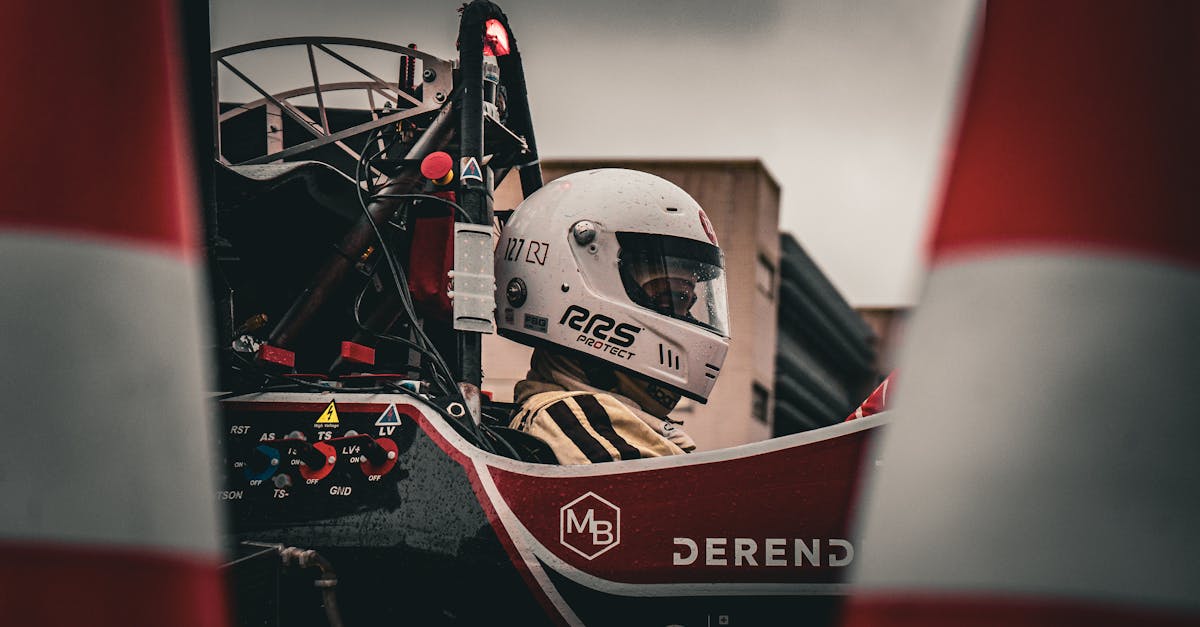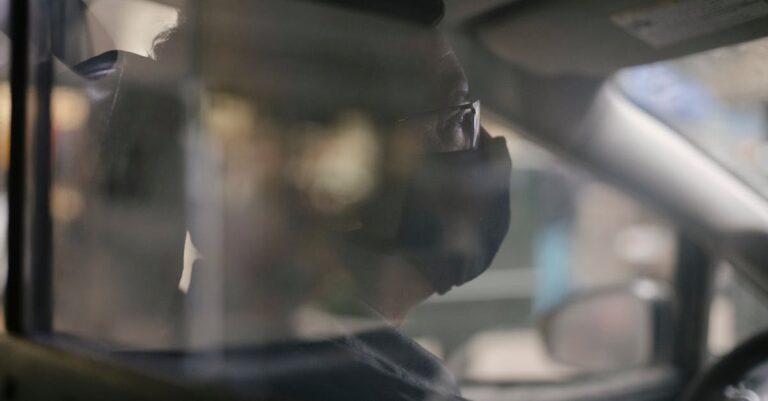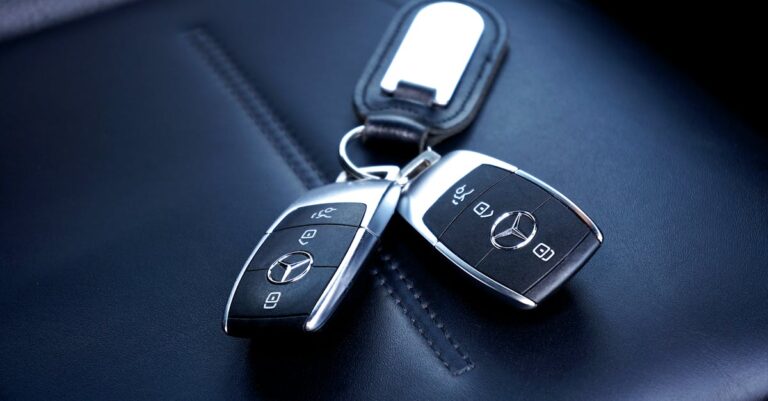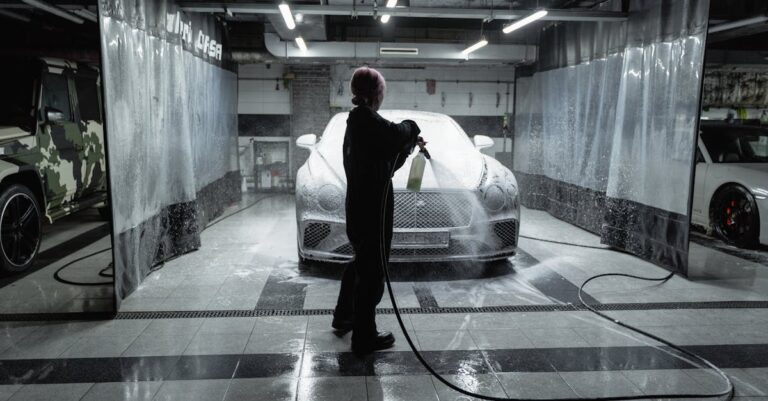Table of Content
- Preparing For A Driving Test: Conquer Your Nerves and Ace It!
- Why Preparation is Non-Negotiable for Your Driving Test
- Mastering the Fundamentals: The Building Blocks of Success
- Practice Makes Perfect (Seriously!)
- Conquering the Maneuvers Like a Boss
- Understanding the Examiner’s Mindset
- The Day Before and the Day Of: Final Preparations
- Managing Test Day Nerves: Taming the Butterflies
- Conclusion: You’ve Got This! Time to Shine!
- FAQs About Preparing for Your Driving Test
Preparing For A Driving Test: Conquer Your Nerves and Ace It!
Okay, let’s talk about the driving test. That looming date on the calendar can feel like a massive hurdle, right? Butterflies in your stomach, maybe a few sleepless nights imagining every possible scenario? Totally normal! Getting your driver’s license is a huge milestone, a passport to freedom and independence. But like any big exam, the key isn’t just wishing for the best; it’s about solid, smart preparation. Feeling overwhelmed? Don’t be! Think of this guide as your friendly co pilot, here to navigate you through the process of preparing for your driving test. We’re going to break it all down, step by step, giving you actionable tips and building that confidence so you can walk into the test center feeling ready to impress. Ready to shift gears and get started?
Why Preparation is Non-Negotiable for Your Driving Test
You might be thinking, “I drive okay, isn’t that enough?” Well, maybe for popping to the shops, but the driving test is a different beast altogether. It’s not just about getting from A to B; it’s about proving you can do it safely, consistently, and according to a specific set of standards. Winging it? That’s a recipe for disappointment.
Understanding the Stakes: More Than Just a License
Sure, the primary goal is that shiny new license. But passing your driving test represents more than just the legal right to drive. It’s a demonstration of responsibility, competence, and awareness. Think about it: you’ll be controlling a tonne or two of metal, often at speed, sharing the road with countless others – pedestrians, cyclists, other drivers. The examiner needs to be absolutely certain you won’t be a hazard. Passing means you’ve shown you have the fundamental skills and attitude to handle this responsibility. It’s a validation of the hours you’ve put in and a massive confidence booster. Failing, on the other hand, can feel like a real setback, questioning your abilities.
The Cost of Failure: Time, Money, and Confidence
Let’s be practical. Failing your driving test isn’t just emotionally draining; it hits your wallet and your schedule too. There’s the cost of the test itself, which isn’t insignificant. Then, there’s the likely need for more lessons to correct the faults identified by the examiner. Add to that the waiting time for a new test slot – which can sometimes be weeks or even months! It all adds up. Each failed attempt can chip away at your confidence, making the next try feel even more daunting. Proper preparation drastically reduces the chances of having to go through this frustrating cycle. Investing time and effort upfront is far more efficient (and less stressful!) than repeated attempts. Think of preparation as an investment, not an expense.
Mastering the Fundamentals: The Building Blocks of Success
Before you even think about complex junctions or those tricky maneuvers, you need a rock solid foundation. It’s like building a house – you wouldn’t start putting up walls on shaky ground, would you? Driving is the same. Getting the basics right makes everything else feel so much easier.
Know Your Vehicle Inside and Out
Your car (whether it’s your instructor’s or your own) is your partner in this test. You need to be intimately familiar with it. Fumbling around trying to find the windscreen wipers or demisters during the test is a sure fire way to rack up minor faults and signal to the examiner that you’re not fully prepared.
Essential Pre-Drive Checks (Show Me/Tell Me Questions)
At the start of your test, the examiner will ask you one ‘tell me’ question (where you explain how you’d perform a check) before you start driving, and one ‘show me’ question (where you physically demonstrate a check) while you’re driving. These aren’t designed to trick you; they’re basic safety checks. Can you confidently explain how to check the tyre pressure, tread depth, or brake fluid? Can you quickly show how to operate the horn, wash the windscreen, or demist the windows while keeping control of the car? Practice these! Go through the list with your instructor until you can answer and demonstrate them without hesitation. Knowing these demonstrates vehicle sympathy and basic safety awareness – easy marks to gain!
Getting Comfortable with Controls
This goes beyond the ‘show me’ questions. It’s about muscle memory. Your hands and feet should know exactly where to go for the pedals, gear stick, indicators, wipers, lights, and steering wheel without you having to consciously think about it or look down. Practice operating these smoothly while maintaining your focus on the road. Can you indicate, change gear, and steer around a bend all at the same time without getting flustered? This level of familiarity frees up your mental bandwidth to concentrate on observation, planning, and hazard perception – the stuff that really matters on the test.
Honing Your Core Driving Skills
These are the actions you’ll be performing constantly throughout your test (and your driving life!). Smoothness and control are key.
Smooth Steering and Gear Changes
Jerky steering or crunching gears won’t impress the examiner. Practice smooth, progressive steering – using the push pull method is generally preferred for control. Avoid crossing your hands or letting the wheel spin back on its own. Similarly, aim for seamless gear changes. Listen to the engine, anticipate when you need to change up or down, and coordinate your clutch, accelerator, and gear lever actions smoothly. Stalling unnecessarily or labouring the engine suggests poor control. Practice finding the biting point on hills for smooth starts. It’s all about making the car do what you want, gently and predictably.
Effective Observation and Mirror Use: The Secret Sauce
This is arguably *the* most critical skill the examiner is looking for. It’s not just about glancing in your mirrors; it’s about actively scanning, understanding what you see, and reacting appropriately. Are you using the Mirror Signal Manoeuvre (MSM) routine consistently before changing speed or direction? Are you checking your centre and door mirrors regularly, even when driving straight? Are you looking well ahead, scanning for potential hazards like pedestrians stepping out, cars pulling out, or changing traffic lights? Are you checking your blind spots with a shoulder check before moving off or changing lanes? Good observation is like having driving superpowers – it allows you to anticipate problems before they happen. Make your head movements obvious (without being exaggerated) so the examiner *knows* you’re looking. Poor observation is a common reason for failing, so make this a top priority in your practice.
Practice Makes Perfect (Seriously!)
You’ve heard it a million times, but it’s true. You simply cannot get good at driving by reading about it or watching videos (though they can help!). You need practical, hands on experience behind the wheel. The more time you spend driving, the more natural and instinctive it becomes.
Logging Those Driving Hours: Quality Over Mere Quantity
While clocking up hours is important, just driving around aimlessly isn’t the most effective strategy. Aim for quality practice. What does that mean?
- Focused Sessions: Go out with a specific goal for each drive. Maybe today you focus on perfecting roundabouts, or perhaps nailing those hill starts.
- Professional Lessons: Regular lessons with a qualified driving instructor are invaluable. They know the test routes, understand the common pitfalls, and can provide structured feedback to correct your mistakes before they become bad habits. They are your best resource for understanding the test standard.
- Private Practice: If possible, supplement your lessons with private practice (with a suitable accompanying driver and the correct insurance, of course!). This helps build confidence and familiarity in different situations. However, be careful not to pick up bad habits from your accompanying driver – always try to apply what your instructor teaches you.
- Mock Tests: Ask your instructor to conduct mock tests under exam conditions. This is the BEST way to simulate the real thing, identify weak areas, and get used to the pressure. Treat them seriously!
Don’t just count the hours; make the hours count!
Driving in Diverse Conditions: Become an All Weather Pro
The driving test won’t necessarily happen on a bright, sunny day with empty roads (wouldn’t that be nice?). You need to be comfortable and safe driving in various conditions, as the examiner needs to see you can adapt.
Tackling Different Weather Scenarios
Try to get practice in different weather conditions if possible.
- Rain: Learn how rain affects visibility and stopping distances (double them!). Practice using wipers effectively and be aware of spray from other vehicles. Drive more slowly and smoothly.
- Bright Sunshine: Low sun can be dazzling. Know where the sun visor is and use it! Be extra vigilant as it can be harder to see pedestrians or cyclists in shadow.
- Wind: Strong winds can affect vehicle stability, especially high sided vehicles. Be prepared for gusts, particularly in exposed areas or when overtaking large vehicles. Keep a firm grip on the wheel.
- Darkness: While tests usually happen in daylight, getting some practice driving at night is beneficial for your overall confidence and understanding of using headlights correctly and judging distances differently.
Adapting your driving appropriately to the weather shows maturity and good planning.
Navigating Various Road Types and Traffic
Don’t just stick to the quiet suburban streets you learned on. Your test route will likely involve a mix of road types. Get comfortable with:
- Urban Roads: Dealing with heavy traffic, traffic lights, pedestrian crossings, cyclists, buses, and complex junctions. Observation and planning are crucial here.
- Rural Roads: Higher speeds, sharp bends, hidden entrances, slow moving vehicles (like tractors), and potential hazards like animals. Requires good anticipation and speed management.
- Dual Carriageways: Higher speed limits, merging and exiting slip roads, lane discipline, and safe overtaking. Practice judging speeds accurately.
- Residential Areas: Parked cars reducing visibility and road width, children playing, speed bumps. Requires lower speeds and heightened awareness.
The more varied your practice, the less likely you are to be thrown off by an unfamiliar situation during your test.
Conquering the Maneuvers Like a Boss
Ah, the maneuvers. For many learners, these are the most feared part of the test. But they don’t have to be! Remember, the examiner isn’t looking for Formula 1 speed; they’re looking for accuracy, control, and observation. Take your time, keep checking those mirrors and blind spots, and make corrections if needed.
Parallel Parking Demystified: It’s Not Magic!
The dreaded parallel park! It looks complicated, but it’s all about reference points and procedure. Work closely with your instructor to find reference points on the car (like lining up your door mirror with a part of the target vehicle) that work for you. Break it down into stages: position alongside, reverse straight back, steer full lock, straighten up, reverse back again, final steering adjustment. The key is slow speed and constant observation. Check all around before and during the maneuver. Don’t be afraid to make small adjustments. It’s better to adjust slightly than to hit the curb hard or end up miles away.
Bay Parking: Forward and Reverse Confidence
You might be asked to drive forward into a parking bay and reverse out, or reverse into a bay and drive out. Again, reference points are your friend.
- Reversing In: Often considered easier as you have better visibility driving out. Line up your car appropriately (your instructor will show you how), select reverse, check all around (especially behind!), and steer smoothly into the bay, using your mirrors to judge your position relative to the lines. Aim to finish reasonably central within the bay.
- Driving In: Requires good judgment of space as you turn into the bay. Make sure you swing out wide enough to avoid hitting the car next to the space. Again, check mirrors and aim for the centre. Reversing out requires extra caution – check all around constantly as your visibility is more restricted.
Slow, controlled movements and all round checks are essential for both.
Pulling Up on the Right Side of the Road Safely
This maneuver involves pulling up on the right side of the road, reversing back for about two car lengths, and then rejoining the traffic safely. The critical elements here are:
- Safety Checks: Before pulling across to the right, you MUST ensure it’s safe – check oncoming traffic thoroughly, as well as mirrors and blind spots. Signal appropriately.
- Positioning: Pull up reasonably close to the curb, but not touching it.
- Reversing: Constant all round observation is paramount while reversing. Look mainly out the rear window, but make frequent checks ahead and in mirrors. Keep the car straight and controlled.
- Moving Off: This is crucial. You are now on the ‘wrong’ side of the road, facing oncoming traffic. You need exceptional observation both ways before moving off. Check mirrors and blind spots meticulously. Signal if necessary.
This maneuver heavily tests your observation skills and ability to manage risk.
Understanding the Examiner’s Mindset
It can be helpful to think about the test from the examiner’s perspective. They’re not trying to catch you out or fail you deliberately. Their job is to assess whether you are a safe and competent driver, ready to handle the roads independently.
What Are They Really Looking For? Safety First!
Above all else, the examiner is assessing safety. Every instruction they give, every junction you navigate, every maneuver you perform is a chance for you to demonstrate safe practices. Are you:
- Observing effectively? (Mirrors, blind spots, scanning ahead)
- Anticipating and planning? (Seeing potential hazards early and thinking about what might happen next?)
- Controlling the vehicle smoothly? (Steering, braking, accelerating, changing gear appropriately?)
- Following rules and regulations? (Speed limits, road signs, lane discipline?)
- Showing awareness of other road users? (Giving way correctly, showing courtesy?)
They are looking for consistent, safe driving. A minor error (a ‘driving fault’) might be okay if it’s infrequent and doesn’t compromise safety. However, a ‘serious’ fault (potentially dangerous) or a ‘dangerous’ fault (involving actual danger) will result in failure. Repeated minor faults in one area can also add up to a serious fault. They want to see that you’re not just going through the motions, but that you understand why you’re doing things – why you check your mirrors, why you maintain a safe following distance, why you approach junctions cautiously. Think safety, demonstrate safety, and you’re halfway there.
The Day Before and the Day Of: Final Preparations
You’ve put in the hours, honed your skills, and practiced those maneuvers. Now it’s about ensuring you’re in the best possible state – mentally and physically – for the test itself. Don’t let poor last minute prep undo all your hard work!
The Crucial Night Before: Rest, Review, Relax
Cramming rarely works for practical skills, and driving is no exception. Avoid a marathon last minute driving session the night before; you’re more likely to tire yourself out and make mistakes. Instead:
- Gentle Review: Briefly look over the ‘Show Me, Tell Me’ questions or mentally walk through the steps of your maneuvers. Don’t overdo it.
- Get Organised: Lay out everything you need for the test day – your provisional license, theory test pass certificate (if required), glasses or contact lenses if you wear them, comfortable shoes, and payment if necessary. Knowing it’s all ready reduces morning stress.
- Eat Well and Hydrate: Have a decent dinner, but avoid anything too heavy or likely to upset your stomach. Drink water.
- Relax: Do something calming. Watch a movie, read a book, listen to music, take a warm bath. Avoid stressful conversations or activities.
- Prioritise Sleep: This is perhaps the MOST important thing. Aim for a good 7 8 hours of quality sleep. Being well rested sharpens your focus, reaction times, and decision making abilities – all crucial for the test.
Test Day Logistics: Don’t Sweat the Small Stuff
The big day is here! Keep things calm and organised.
- Good Breakfast: Have a sensible breakfast to maintain energy levels. Avoid excessive caffeine, which can increase jitters.
- Comfortable Clothing: Wear clothes and shoes you feel comfortable driving in – nothing restrictive or with footwear that might slip off the pedals.
- Allow Plenty of Time: Leave for the test centre much earlier than you think you need to. Factor in potential traffic delays. Rushing will only heighten anxiety. Aim to arrive about 10 15 minutes before your appointment.
- Pre Test Lesson (Optional but Recommended): Many instructors offer an hour’s lesson immediately before the test. This is a great way to warm up, get familiar with the car again, calm nerves, and ask any last minute questions. It helps you get ‘in the zone’.
- Use the Loo: Go to the toilet before you meet the examiner! You don’t want that distraction during the drive.
- Documents Ready: Have your provisional license easily accessible.
Handling these simple logistics smoothly means you can focus all your mental energy on the drive itself.
Managing Test Day Nerves: Taming the Butterflies
Feeling nervous before your driving test is completely normal. In fact, a little bit of adrenaline can actually sharpen your senses. The key is to stop nerves from overwhelming you and hindering your performance. Think of it like stage fright – even seasoned performers feel it, but they learn to manage it.
Techniques to Stay Calm and Focused Under Pressure
Here are some strategies to keep those nerves in check:
- Positive Mindset: Remind yourself of all the practice you’ve done. You wouldn’t be taking the test if your instructor didn’t think you were ready. Visualise yourself driving calmly and successfully completing the test. Replace negative thoughts (“What if I fail?”) with positive affirmations (“I am prepared, I can do this”).
- Deep Breathing: If you feel anxiety rising, take a few slow, deep breaths. Inhale slowly through your nose, hold for a couple of seconds, and exhale slowly through your mouth. This simple technique can physically calm your nervous system. Do it before you start the engine and any time you feel overwhelmed during the drive (e.g., while waiting at lights).
- Focus on the Task at Hand: Try not to think about the overall outcome (“Am I passing?”). Instead, concentrate fully on what you are doing right now – the current road, the current instruction, the next junction. Break the test down into smaller, manageable chunks.
- It’s Okay to Make Minor Mistakes: Don’t assume one small error means you’ve failed. Examiners expect you to be a learner, not a perfect driver. If you stall, deal with it safely and move on. If you take a wrong turn (during the independent driving section), don’t panic – it’s usually not a fault as long as you do it safely. The examiner will help you get back on route. Dwelling on a mistake makes you more likely to make another one.
- Listen Carefully: Pay close attention to the examiner’s instructions. If you’re unsure about anything, politely ask them to repeat it. It’s better to clarify than to guess and do the wrong thing.
- Remember the Examiner is Human: They were learners once too! They’re just doing their job. A bit of light chat (if initiated by them) can sometimes ease the tension, but don’t feel obliged to entertain them – your focus is the drive.
- Trust Your Training: You’ve been taught the skills and routines. Rely on your training and your instructor’s guidance. Try to drive just as you would during a good lesson.
Managing nerves is a skill in itself. Practice these techniques, find what works for you, and go into the test feeling as calm and confident as possible.
Conclusion: You’ve Got This! Time to Shine!
So there you have it – a deep dive into preparing for your driving test. It might seem like a lot, but remember, preparation is your superpower. It transforms anxiety into confidence, uncertainty into competence. From mastering the controls and nailing observation to conquering maneuvers and managing those inevitable nerves, every bit of effort you put in now significantly boosts your chances of success. Don’t aim for perfection; aim for safety, control, and consistency. Trust your training, believe in your abilities, and take it one step, one junction, one maneuver at a time. Getting your license is an amazing feeling of freedom, and with the right preparation, you’re well on your way to experiencing it. Breathe deep, stay focused, and show the examiner the safe, capable driver you’ve become. Good luck – you’re ready!
FAQs About Preparing for Your Driving Test
1. How many driving lessons do I actually need before taking the test?
There’s no magic number, as everyone learns at a different pace. The DVSA (Driver and Vehicle Standards Agency) suggests the average is around 45 hours of professional lessons combined with about 20 hours of private practice. However, the most important factor is reaching the required standard, not just hitting a certain number of hours. Your instructor is the best judge – they will tell you when they believe you are consistently driving safely and independently, ready for the test.
2. What’s the biggest reason people fail their driving test?
According to official statistics, observation faults are consistently among the top reasons for failure. This includes things like not checking mirrors effectively before signaling or changing direction, poor observation at junctions (leading to pulling out unsafely), and lack of blind spot checks. Control issues (steering, gears, stalling) and incorrect response to road signs/markings are also common culprits. This highlights why focusing on those core skills and hazard perception is so vital.
3. Can I use my own car for the driving test?
Yes, you absolutely can use your own car, provided it meets certain requirements. It must be properly taxed, insured for a driving test (check with your insurer!), roadworthy (no warning lights on), have an additional interior rear view mirror for the examiner, display L plates (or D plates in Wales), and meet rules about size and visibility (some small convertible or coupe models might not be suitable). Most learners find it easier and less stressful to use their instructor’s dual controlled car, which they are familiar with.
4. What happens if I make a mistake during the independent driving part?
Don’t panic! The independent driving section (where you follow traffic signs or directions from a sat nav) tests your ability to make decisions safely without step by step instructions. Taking a wrong turn is generally not a driving fault, as long as you do it legally and safely. If you realize you’re going the wrong way, continue safely until you can find a suitable place to correct your route or wait for the examiner/sat nav to redirect you. The examiner is assessing your driving skill, not your navigation prowess.
5. Is it better to take the test during busy or quiet times?
There are pros and cons to both. Quieter times might mean less complex traffic situations, but could also mean higher speeds on some roads and potentially make certain faults (like hesitation) more obvious. Busy times present more hazards and require more intense observation and planning, but traffic flow might be slower, giving you more thinking time in some situations. Ultimately, you need to be prepared to drive safely in whatever conditions you encounter. Practicing at different times of day will help you feel ready for anything.









